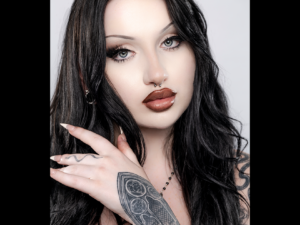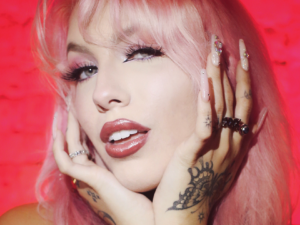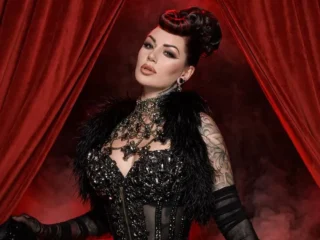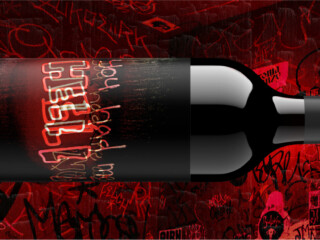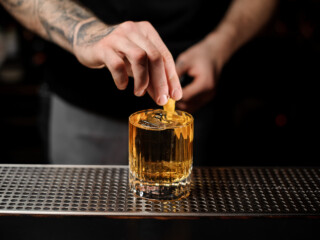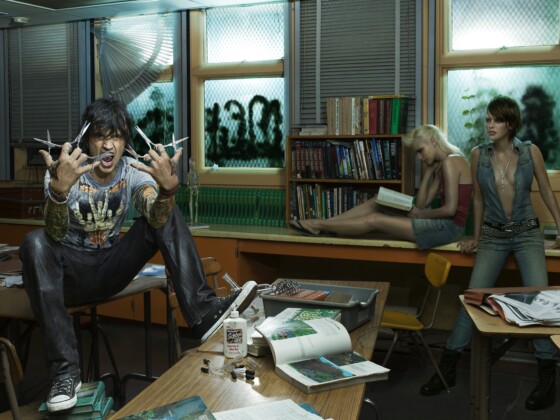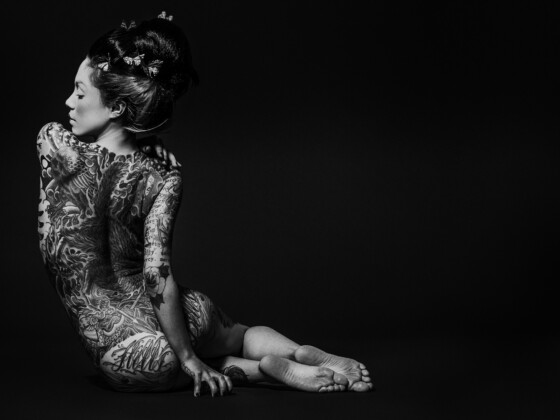Devon Preston
June 26th, 2019
Meet Harley Davidson’s First Licensed Oil Painter
Take a look at David Uhl's exclusive interview with Inked
In 1988, David Uhl purchased his first motorcycle and 30 years later, he’s created hundreds of oil paintings for Harley-Davidson. Pulling inspiration from bikes past and present, Uhl captures the spirit of the open road with each careful stroke. Uhl takes black-and-white photographs, some of which haven’t seen the light of day for decades, and brings them back to life on canvas. His timeless approach to artistic application blended with an all-American composition makes the work of David Uhl stand the test of time, in more ways than one.

How did purchasing your first bike in 1988 inspire you to start creating paintings featuring motorcycles?
I can remember loving the feeling of acceleration more than anything. If there was something that ignited any artistic inspirational thoughts, it would have been being exposed to the whole riding culture and capturing that lifestyle. I translated my creative impulses into T shirt designs at that time.
What led you to then begin working with Harley-Davidson, first creating apparel and then becoming a licensed oil painter?
I really wanted a Harley, but couldn’t afford one back then. At that time, The Motor Co. was flying high and anything with a bar and shield required getting on a waiting list, especially bikes. I figured I should apply all my artistic talents to getting their attention first. I initiated that by flying to an international dealer meeting in Boston with a portfolio. A local dealer took me up to meet all the top brass, and I ended up coming home with a t-shirt design contract with their most popular license: Holoubek.
After 500 t-shirt designs, I got quite bored and decided to try my hand at oil painting. My first painting depicted an old black-and-white snapshot from the early ‘40s. I created a large oil of this image and flew to Milwaukee to show it to the licensing dept. They said it was epic and granted me a license to continue. Getting their blessing also included access to their extensive photo archives. So I was off to the races. Feeling ecstatic, I was officially the archival oil painter of the rich history of one of the most recognized brands on the planet.

How do history and the bikes of the past play a role in your paintings?
I’ve always been a bit of a historian, so this new project bolstered my enthusiasm. I would fly to Milwaukee and spend days hidden in the archives, digging in deep, and eventually surfacing with amazing and incredible black-and-white jewels. I discovered that Harley-Davidson was integral to describing the early American enthusiastic relationship with the internal combustion engine.
Which fine artists helped to shape the style you work in today?
I was so motivated to make my paintings reflect these timeless snippets of history, I was hell bent on painting them in a style that complemented the historic nature of the pieces. I went to museums and bought tons of art books. I focused on the masters from 1860 to 1930. This included such names as John Singer Sargent, Anders Zorn, and Joaquín Sorrolla. My whole intent was to do paintings that would stand the test of time. I wanted my work to look as though it could have been painted a century ago. The opposite of falling prey to any of the current trends and then the subsequent demise of going out of style.
What type of bike is your favorite to paint and why?
I’m not a fan of painting sparkly new anything, so I tend to be drawn to knuckleheads, pans, and earlier bikes. I can paint chrome as well as anyone, I just find it a bore. I liken it to painting an old beautiful patina on a door from Santa Fe as opposed to a brand-new aluminum one from Home Depot. So anything with some character and provenance get my brushes vibrating.
What does riding mean to you and how do you reflect these emotions in your paintings?
When I find time to get out and ride, I always come back inspired and ready to throw some paint down. When out on the road, I’m always seeing potential paintings fly by, so I slow down a bit. This can cause problems when I’m in a group that’s trying to break speed records. Many times I will keep a camera in the saddle bag and record what I see for later applications.
Your work is frequently recreated in tattoos. If you had to choose one of your paintings to be on you forever, which would it be?
Yikes, that’s a tough one. In fact, one of my main reasons for abstaining from tattoos thus far is that at some point, I get fatigued at looking at any of my paintings. It doesn’t matter how much I like it. Tattoos are so permanent that I’m worried that I would get sick of it and not be able to remove it or paint over it. I love having the option of putting my painting in the closet. That being said, I’m at the point in my life now that I’m considering getting some major tattoos. I think I’ve found some ancient imagery that is profound enough to be buried with.
What is “The Women of Harley-Davidson” and how do these women represent the iconic motor company?
Twenty years ago, when I first started painting, I found an “Enthusiast” cover from 1926 in the archives. It depicted a flapper lighting up a smoke. She was such a wonderfully rebellious young lady for her day, I had to paint her. I called the piece “Ruby.” It was my third painting ever and has since turned into one of the most iconic pieces of my entire body of work. It was the inaugural “Women of Harley” work that started the series. I do one every two years, and “Bootlegger Betty” is the latest, she’s number 11.
Editor's Picks
Chris Brown’s Face Tattoo Shows His Heart and Sole
Chris Brown has a brand new tattoo! Long gone are the days of the baby faced teen, Brown is all grown up and has the tattoo collection to prove it!…
Oh Me, Oh My
Chrissy Chlapecka on finding her voice, spreading self-love on TikTok and releasing her first single


